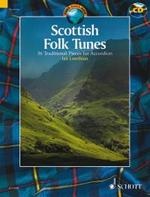James Scott Skinner (1843 - 1927)
 Royaume-Uni
Royaume-Uni
 Royaume-Uni
Royaume-UniJames Scott Skinner (5 August 1843 – 17 March 1927) was a Scottish dancing master, violinist, fiddler, and composer.
Skinner was born the youngest of six children in Arbeadie village which later became part of Banchory, near Aberdeen[1]. His father William Skinner was a dancing master on Deeside. His mother Mary Skinner (nee Agnew) was originally from Strathdon. James was only eighteen months old when his father died. When he was seven, his elder brother, Alexander Forbes Skinner, gave him le ... (Read all)
Source : Wikipedia
Skinner was born the youngest of six children in Arbeadie village which later became part of Banchory, near Aberdeen[1]. His father William Skinner was a dancing master on Deeside. His mother Mary Skinner (nee Agnew) was originally from Strathdon. James was only eighteen months old when his father died. When he was seven, his elder brother, Alexander Forbes Skinner, gave him le ... (Read all)
Source : Wikipedia
FREE SHEET MUSIC
Active criterias:
Search
| ||||||||||












 SHEET MUSIC
SHEET MUSIC